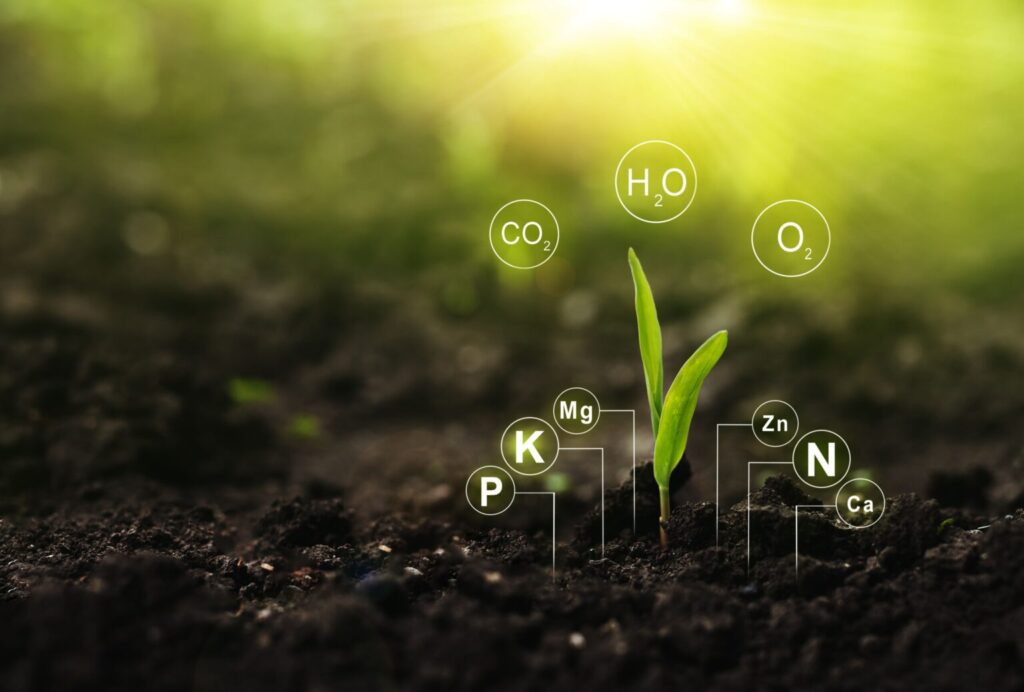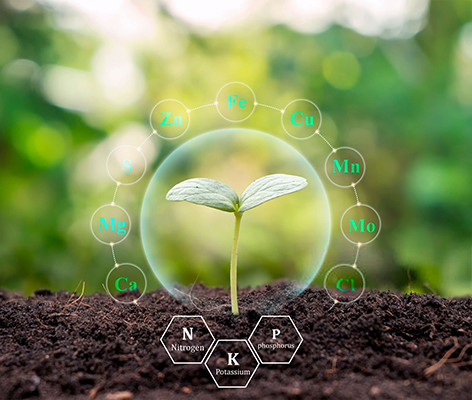Signs of nutrient excess in plants
Signs of nutrient excess in plants
Nutrient excess in plants occurs when the concentration of certain nutrients in the soil is too high, which can harm plant growth and development. This condition may be due to changes in the soil, environmental conditions such as temperature and humidity, as well as interactions between different elements. For example, high concentrations of some elements can prevent the absorption of essential elements, causing problems such as stunted growth and reduced plant quality.
Usually, the effect of elemental excess (toxicity) is seen as a disturbance in the absorption of (one or more elements) in the plant. For example, an increase in potassium in the plant causes a decrease in the concentration of calcium or magnesium, or an increase in phosphorus causes a decrease in zinc (Zn), and an increase in zinc (Zn) stimulates iron deficiency.

Elemental excess may be caused by over-fertilization, irrigation with contaminated water, or mineral-rich soils. To prevent these problems, it is recommended to adjust fertilizer doses properly and perform soil tests to determine the nutritional needs of plants.
Negative and positive effects of excess elements in plants
Excess elements in the soil can have many negative effects on plants. The main effects include:
Element toxicity: Some elements such as aluminum (Al), copper (Cu) and zinc (Zn) can be toxic to plants at high concentrations and damage their growth and development. This toxicity can cause cell death and disruption of plant biological processes.
Competition for uptake: If unnecessary or harmful elements are present in the soil in large quantities, they can occupy the absorption space of the roots and prevent the absorption of essential elements such as nitrogen (N), potassium (K) and calcium (Ca).
Pests and diseases: When plants are stressed by excess elements, they become more vulnerable to diseases and pests.
Reduced quality of fruits and seeds in crops: Toxic elements can impair the quality and taste of agricultural products, which is important for farmers and consumers.
Disruption of plant metabolism: Excess elements can disrupt plant metabolism, including chlorophyll production and photosynthesis, and consequently reduce plant growth and development.
Regular soil testing and the use of appropriate agricultural management methods are essential to prevent the negative effects of excess elements.

Effective methods for improving excess elements in plants
Helping plants against excess elements requires appropriate measures. Here are some effective methods:
1. Soil Analysis: The first step in soil analysis is to identify the type and concentration of elements present, which helps in making better decisions.
2. Soil Leaching: Excessive irrigation can help reduce the concentration of harmful elements in the soil and remove excess elements from the roots.
3. Use of Compost and Organic Matter: Adding compost or organic fertilizers can improve soil structure, increase nutrient uptake, and prevent the absorption of harmful elements.
4. Reduce the use of chemical fertilizers: Reducing the use of chemical fertilizers can prevent excessive accumulation of elements.
5. Crop Rotation: Crop rotation and proper crop planning can enhance soil health and reduce the accumulation of harmful elements.
6. Use of Resistant Plants: Choosing plants that are resistant to certain elements can help reduce negative effects.
7. Consider Soil pH: Adjusting the soil pH can improve nutrient uptake and reduce the toxicity of harmful elements. For example, increasing the pH can reduce the toxicity of aluminum.
8. Cultivation of staple crops: Plants such as wheat and soybeans that are resistant to harmful elements can be planted in contaminated soils to prevent the accumulation of these elements.
By using these methods, you can help plants become more resistant to problems caused by excessive nutrient absorption and grow healthier.


